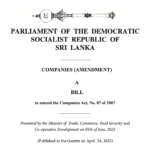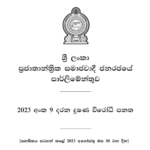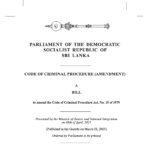A Letter of Credit (LC) is a financial instrument issued by a bank at the request of a buyer to guarantee timely payment to a seller upon the presentation of specified documents. This mechanism ensures compliance with agreed terms, offering a layer of security for international trade transactions. Despite its efficiency, Letters of Credit operate solely on the scrutiny of documents, not the physical goods, underscoring the importance of meticulous documentation. This report examines the expectations of banks regarding proof of shipment in LC transactions, emphasizing the significance of adherence to documentary requirements and exploring best practices for successful execution.
Universal Use of Letters of Credit
The advent of Letters of Credit has revolutionized international trade, particularly post-World War I, fostering a unified approach to payment processes. The International Chamber of Commerce (ICC) has played a pivotal role in establishing globally recognized standards, encapsulated in the Uniform Customs and Practice for Documentary Credits (UCP). Since its inception in 1933, the UCP has undergone several revisions to address evolving trade complexities, with UCP 500 (effective January 1994) serving as a widely adopted benchmark.
Despite the absence of a universally binding treaty, the ICC’s framework and related initiatives, such as the United Nations Convention on Independent Guarantees and Stand-by Letters of Credit (1995), have enhanced legal consistency across jurisdictions. These frameworks address challenges arising from jurisdictional disparities and provide clarity on parties’ obligations. By ensuring that sellers secure payment upon shipment and buyers receive goods as specified, Letters of Credit mitigate many risks inherent in international trade.
Bankers’ Safeguards and Documentary Scrutiny
The fundamental expectation of banks in LC transactions is strict adherence to the documentary terms stipulated in the credit. Banks evaluate whether the documents presented by the seller comply with the LC’s requirements, focusing on completeness, accuracy, and timeliness. Commonly required documents include:
- Bills of Lading: Providing proof of shipment and details of the goods.
- Commercial Invoices: Stating the goods’ description, quantity, and price.
- Certificates of Origin: Verifying the goods’ country of origin.
- Insurance Certificates: Ensuring coverage for the goods during transit.
To safeguard their interests, banks perform a meticulous parity check on all documents, flagging any discrepancies, no matter how minor. The principle of “strict compliance” obliges banks to reject non-conforming documents unless discrepancies are rectified within permissible timelines. This practice protects banks from potential losses and ensures the smooth functioning of international trade while maintaining a balance of trust among all stakeholders.
Proof of Shipment and Role of Bills of Lading
A bill of lading (BOL) is the cornerstone of proof of shipment in LC transactions. It serves multiple functions, including:
- Receipt of Goods: Acknowledging that specified goods have been shipped.
- Contract of Carriage: Outlining terms and conditions between shipper and carrier.
- Document of Title: Granting control over the goods during transit.
Banks require BOLs to confirm that goods have been shipped in compliance with LC terms. Key requirements for a BOL include:
- Negotiability: The ability to transfer ownership rights.
- Cleanliness: Absence of notations indicating defects or damaged goods.
- Proof of Shipment: Indication that goods have been loaded onto the carrier.
The “on-board” requirement, outlined in UCP 500 Article 23, mandates that a BOL explicitly indicate the date of loading on the vessel. Non-compliance with this requirement or reliance on “received for shipment” bills, which lack confirmation of actual shipment, is insufficient for banks to honor payment. These stipulations ensure transparency and minimize disputes in international trade.
Alternative Transport Documents
For modes of transport other than sea, such as air or road, proof of receipt for shipment often suffices. Air waybills and truck consignment notes, while non-negotiable, fulfill the documentary requirements under specific conditions. These documents ensure control over the goods until payment obligations are met, thereby maintaining the integrity of the LC transaction.
- Air Waybills: Provide evidence of goods accepted for air transport. When financed by an LC, the consignee is often listed as the bank, preventing unauthorized clearance of goods before payment.
- Truck Consignment Notes: Used for road transport, these documents confirm goods have been received for shipment and indicate dispatch details.
By allowing flexibility in documentation for different transport modes, Letters of Credit accommodate the complexities of modern trade while maintaining accountability.
Challenges and Best Practices
While LCs provide a robust mechanism for securing payments, sellers often face challenges due to the stringent documentary requirements. Discrepancies in documents prepared by third parties, such as shipping agents, can lead to delays or rejection of payment claims. Banks’ cautious approach, while justified, necessitates careful planning and coordination among all parties involved.
To overcome these challenges, the following best practices are recommended:
- Early Negotiation: Sellers and buyers should agree on precise documentary requirements before issuing an LC.
- Clear Communication: All parties must understand the LC terms and timelines.
- Document Preparation: Sellers should ensure documents are prepared accurately and reviewed for compliance before submission.
- Proactive Problem Solving: Address potential discrepancies promptly to avoid delays.
Conclusion
Letters of Credit remain an indispensable tool in international trade, offering a secure and efficient means of payment. However, their efficacy hinges on strict compliance with documentary requirements. Sellers must ensure the accurate and timely presentation of required documents, particularly proof of shipment, to facilitate smooth payment processing. By adhering to best practices and fostering clear communication with buyers and banks, parties can mitigate risks and optimize the benefits of LC transactions.
The evolving landscape of international trade underscores the need for continuous education and adaptation to regulatory changes, ensuring that Letters of Credit remain a cornerstone of global commerce.














